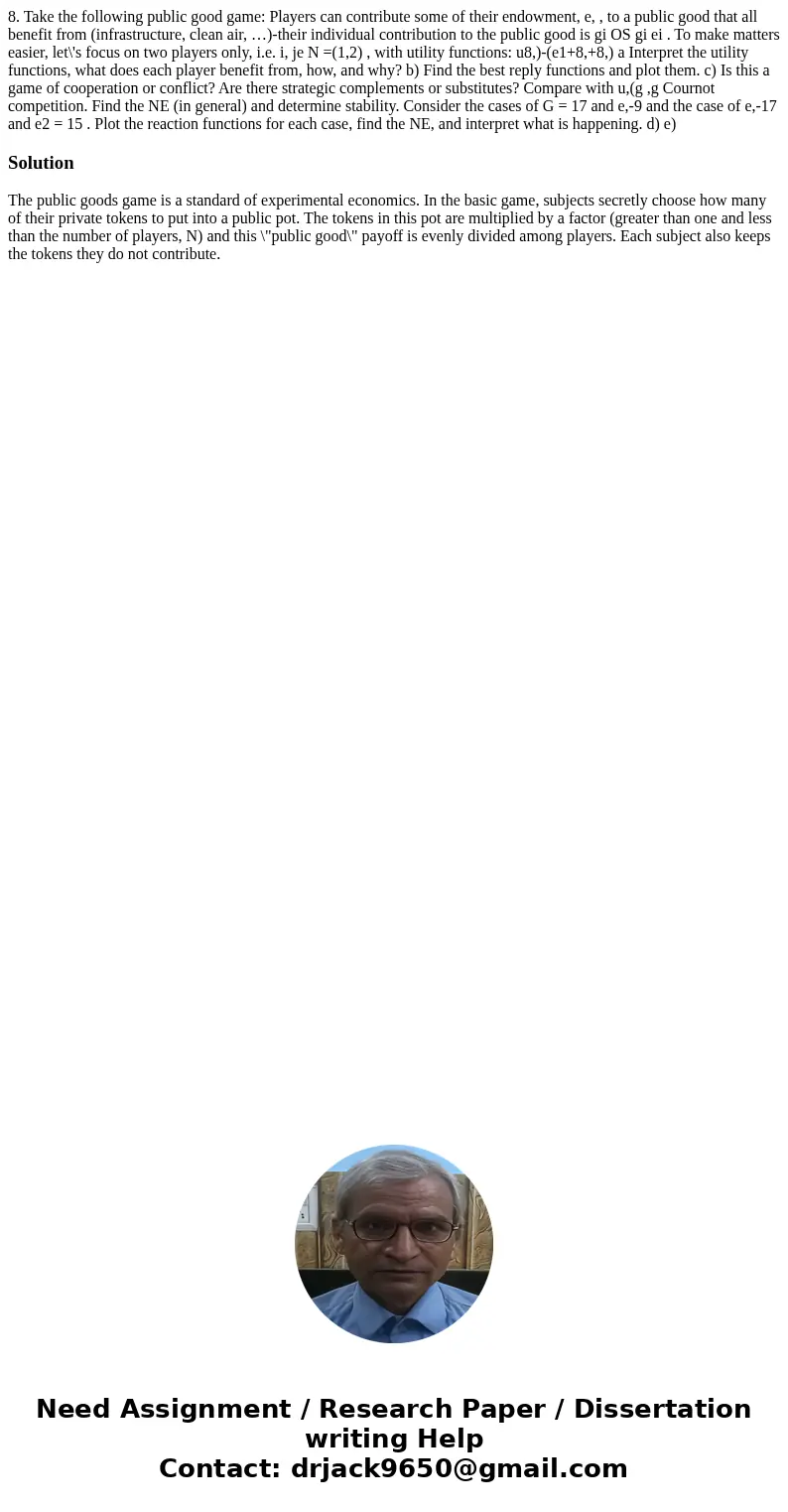8 Take the following public good game Players can contribute
8. Take the following public good game: Players can contribute some of their endowment, e, , to a public good that all benefit from (infrastructure, clean air, …)-their individual contribution to the public good is gi OS gi ei . To make matters easier, let\'s focus on two players only, i.e. i, je N =(1,2) , with utility functions: u8,)-(e1+8,+8,) a Interpret the utility functions, what does each player benefit from, how, and why? b) Find the best reply functions and plot them. c) Is this a game of cooperation or conflict? Are there strategic complements or substitutes? Compare with u,(g ,g Cournot competition. Find the NE (in general) and determine stability. Consider the cases of G = 17 and e,-9 and the case of e,-17 and e2 = 15 . Plot the reaction functions for each case, find the NE, and interpret what is happening. d) e) 
Solution
The public goods game is a standard of experimental economics. In the basic game, subjects secretly choose how many of their private tokens to put into a public pot. The tokens in this pot are multiplied by a factor (greater than one and less than the number of players, N) and this \"public good\" payoff is evenly divided among players. Each subject also keeps the tokens they do not contribute.

 Homework Sourse
Homework Sourse